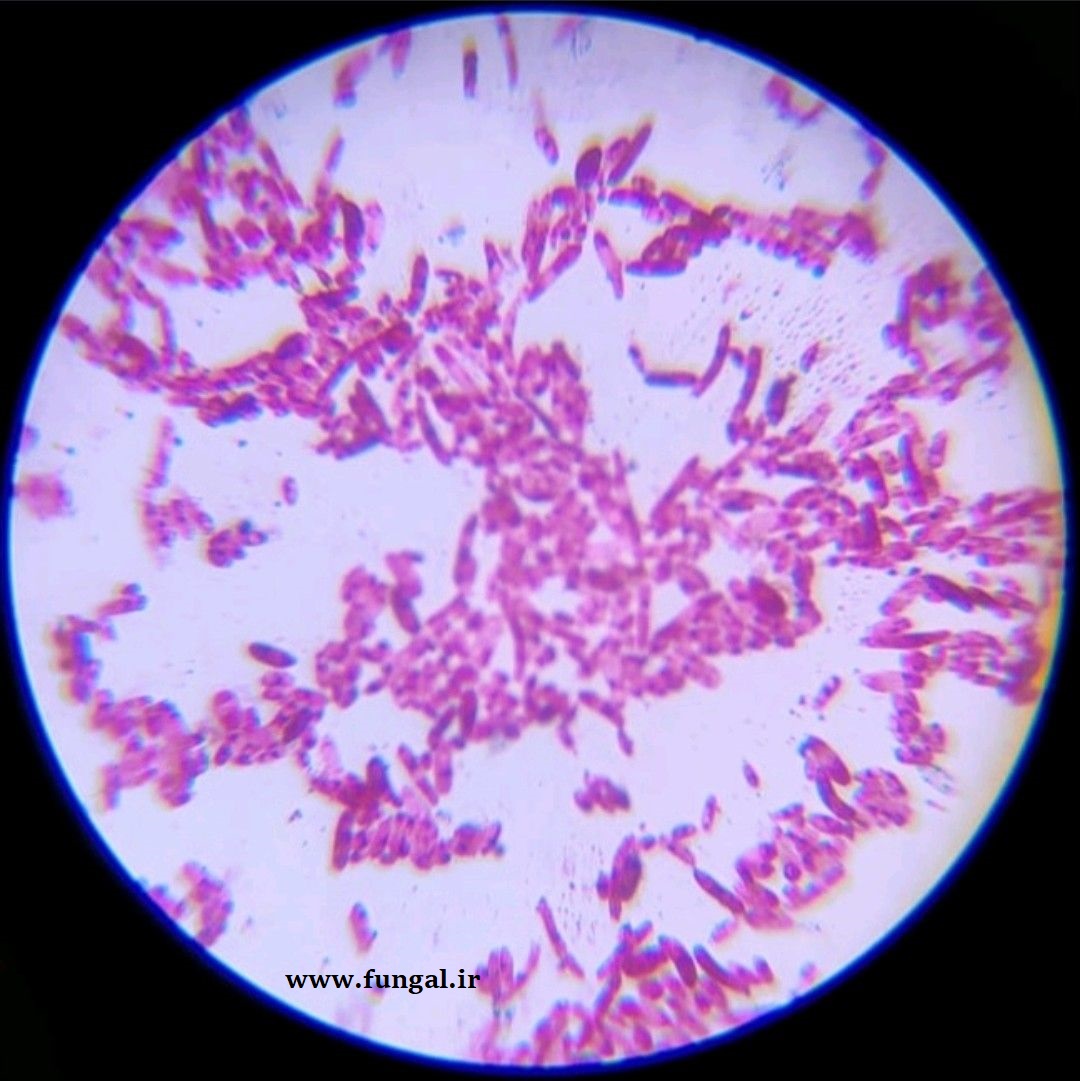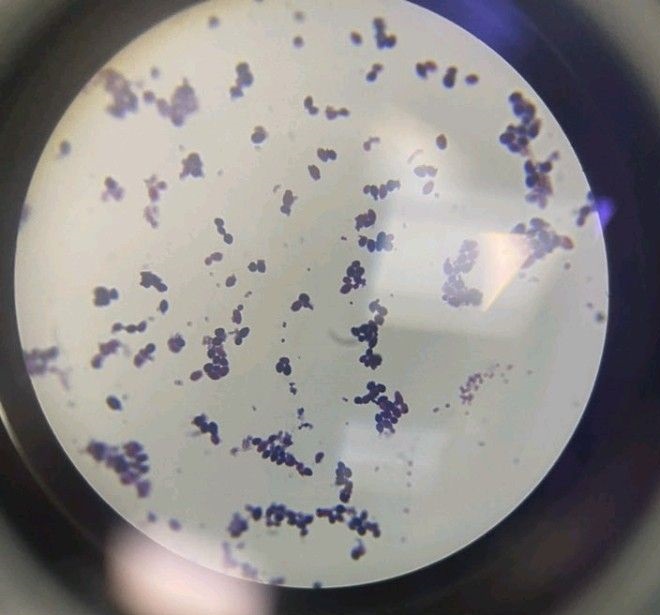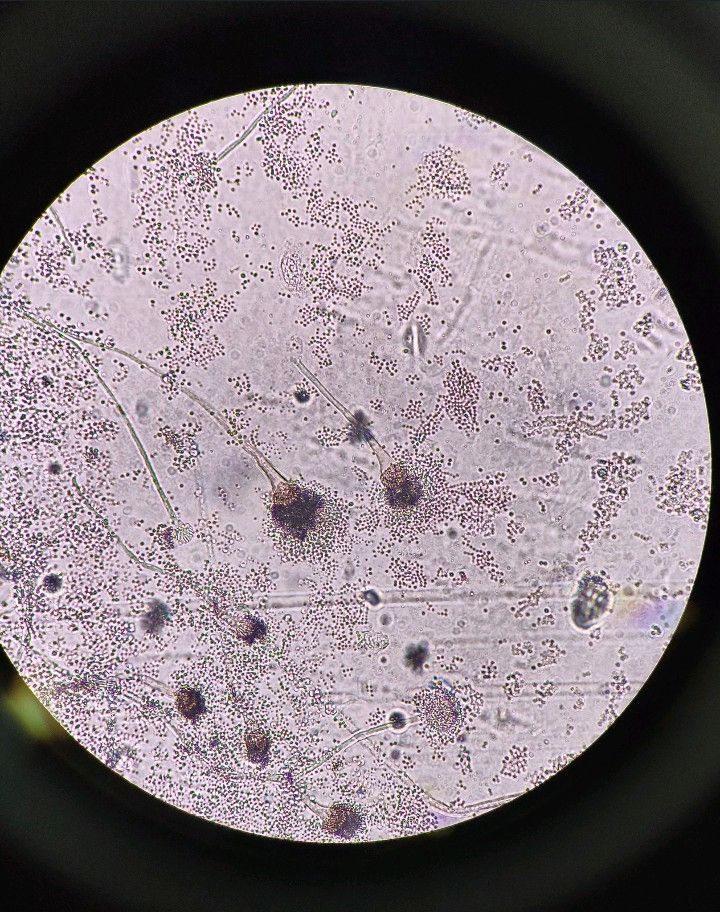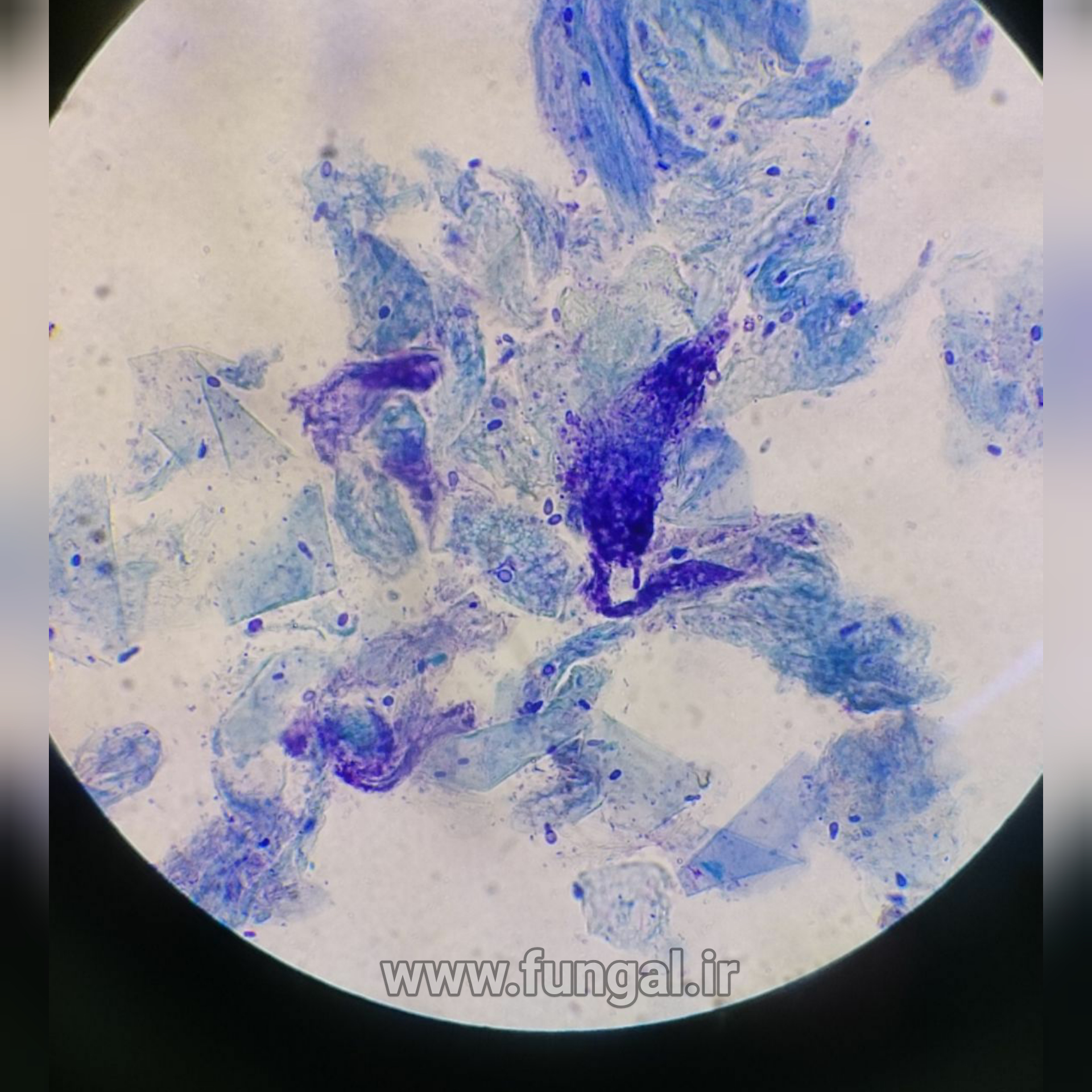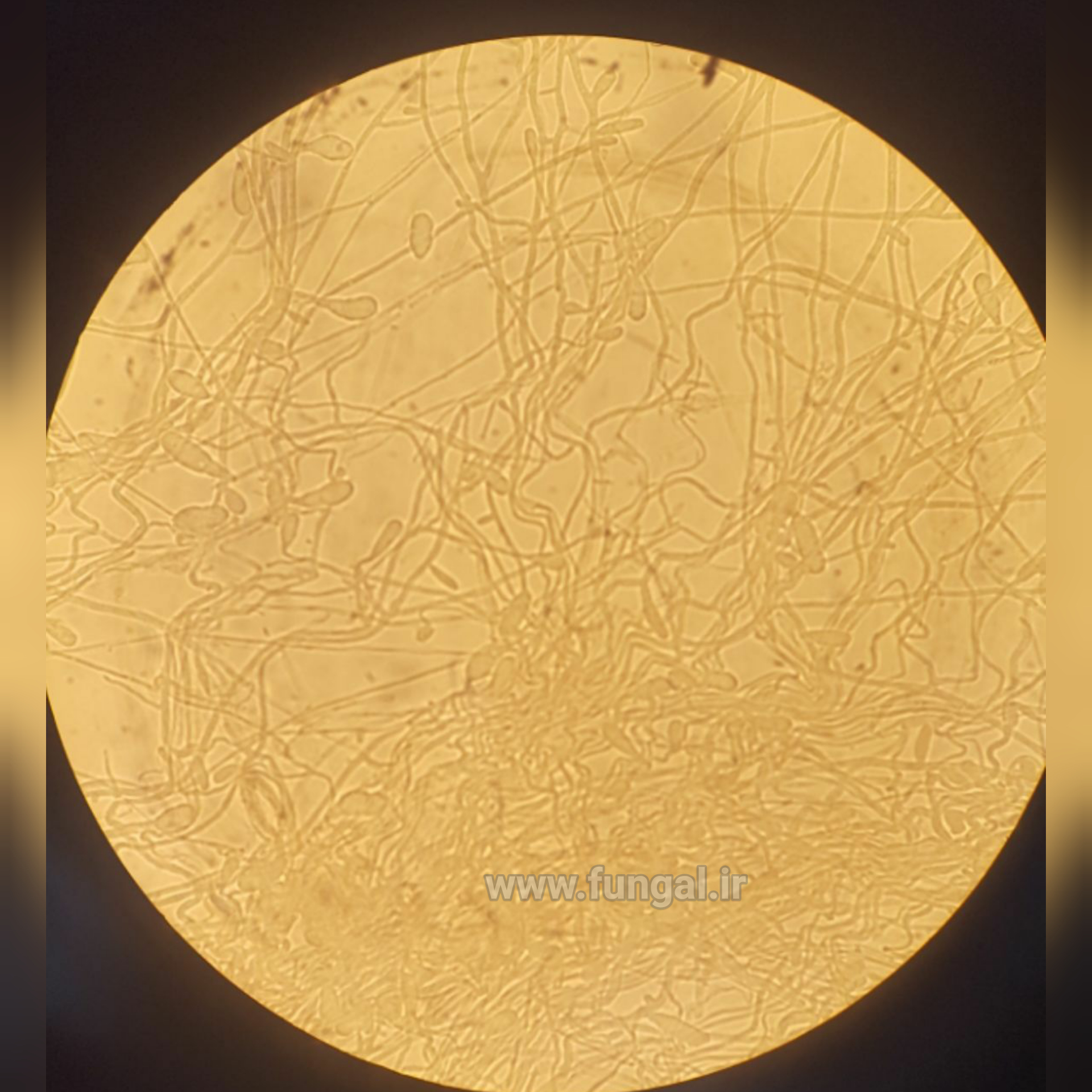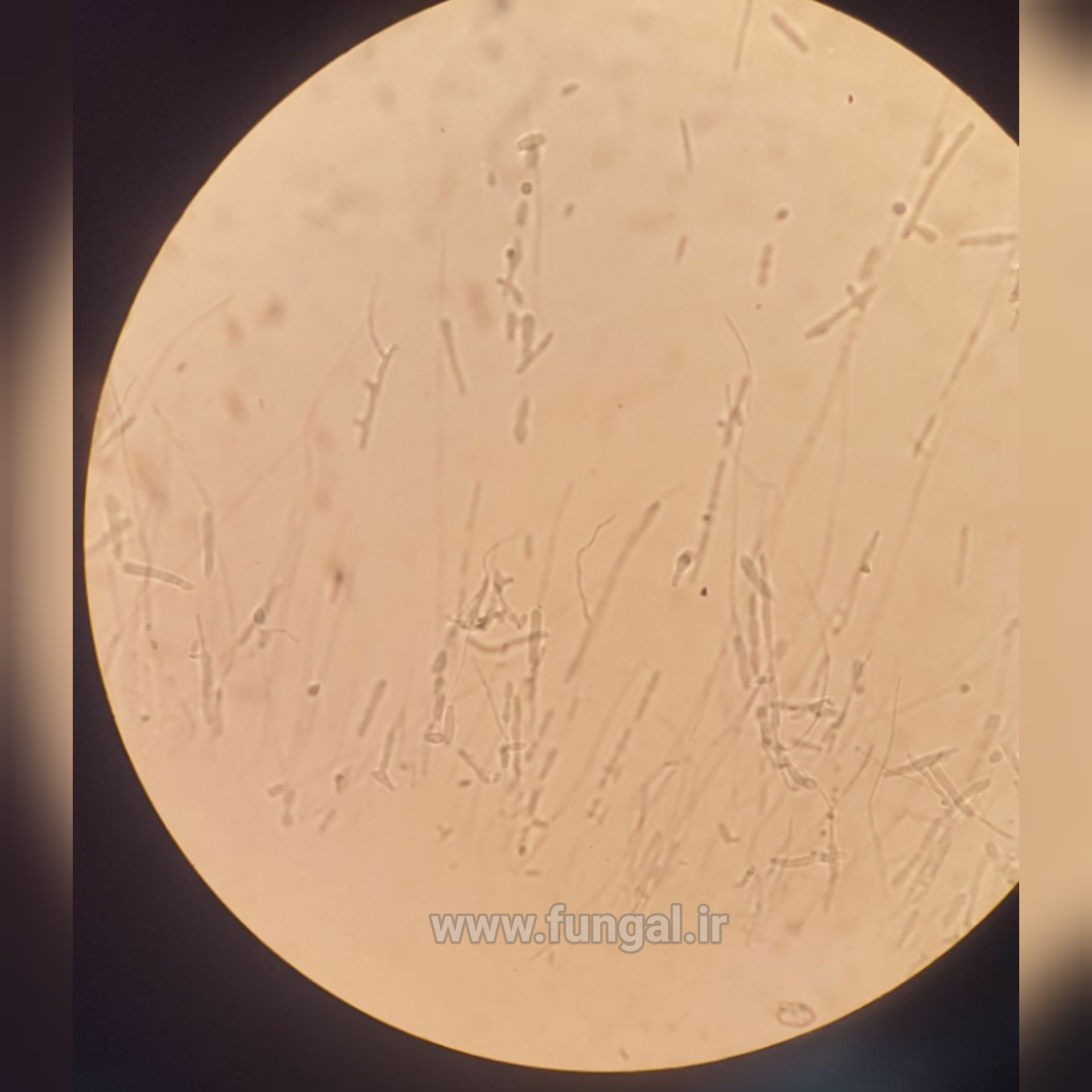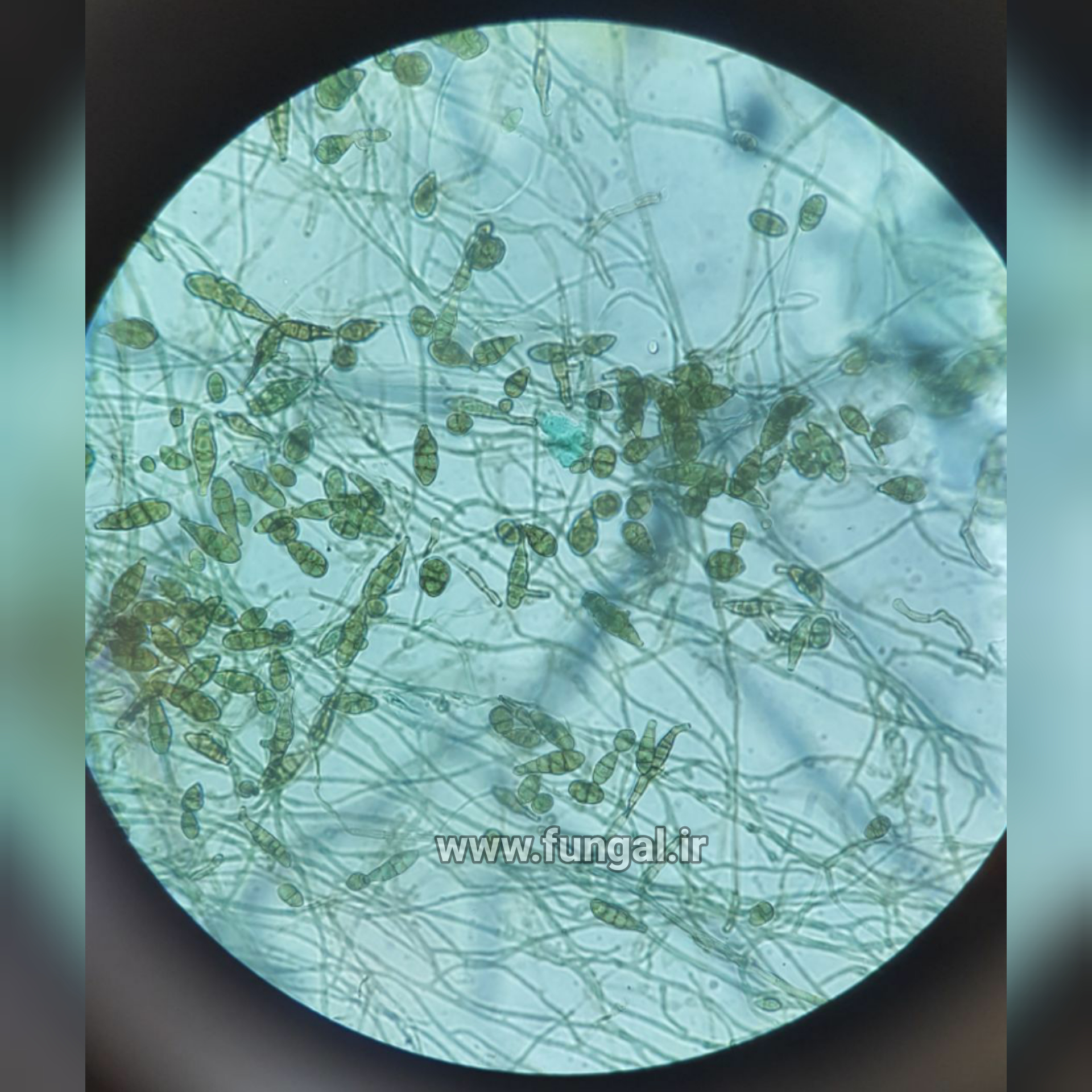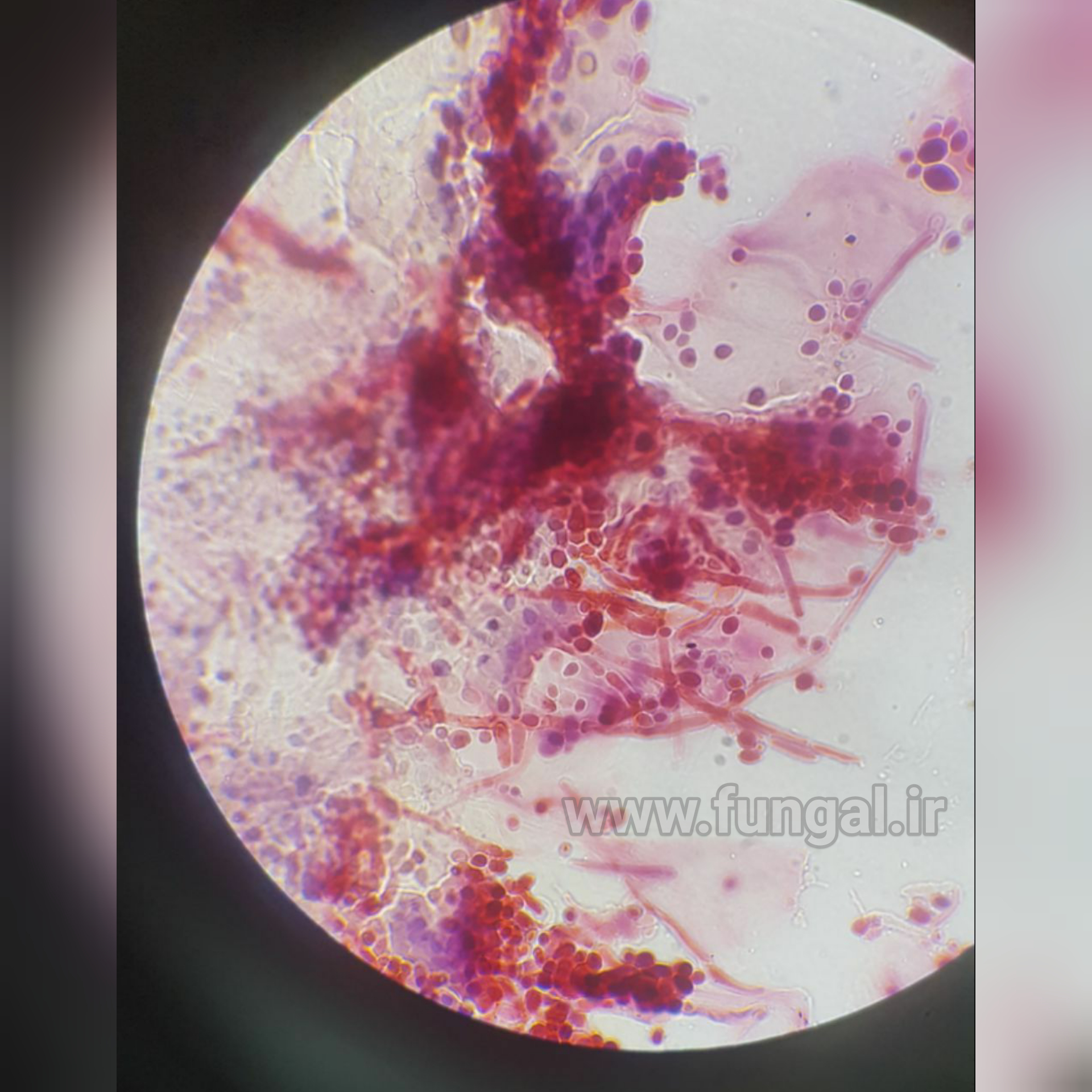Microsporum gypseum is a soil-associated dermatophyte that occasionally is known to colonise and infect the upper dead layers of the skin of mammals.[1] The name refers to an asexual "form-taxon" that has been associated with four related biological species of fungi: the pathogenic taxa Arthroderma incurvatum, A. gypsea, A. fulva and the non-pathogenic saprotroph A. corniculata.[2][3] More recent studies have restricted M. gypseum to two teleomorphic species A. gypseum and A. incurvatum.[1][4] The conidial states of A. fulva and A. corniculata have been assigned to M. fulvum and M. boullardii.[5] Because the anamorphic states of these fungi are so similar, they can be identified reliably only by mating.[1] Two mating strains have been discovered, "+" and "–".[6] The classification of this species has been based on the characteristically rough-walled, blunt, club-shaped, multicelled macroconidia.[4] Synonyms include Achorion gypseum, Microsporum flavescens, M. scorteum, and M. xanthodes.[1][5] There has been past nomenclatural confusion in the usage of the generic names Microsporum and Microsporon.[7]
he colonies of M. gypseum are described as cottony or powdery, they grow rapidly with a colour range of white to buff, with a reserve that can range from pink, to red, to yellow (cinnamon); they may occasionally have overtones of violet.[1][4][5][6][7][8] The powdery appearance of the colony is due to the abundant production of macroconidia on the older mycelium, while the edges of the colony are described as scalloped to ragged and can exhibit pleomorphism.[1][5][6] Macroconidia of M. gypseum have a substantial range that can occur as short pedicels, terminal, solitary, spindle shaped, large, thick walled, that are smooth or roughened,[7] borne directly on hyphae or on short branches.[7] They are often very large (e.g., 40–150 x 8–15 μm), ellipsoid to fusiform, moderately thick, have verrucose and are 4–6 septate.[1][4][5] The macroconidia also possess a rat-like tail at the edges of the conidia.[5] The ascoma of the fungus is a globose, appendaged gymnothecium that is pale buff in colour and 500–1250 μm in diameter.[4] The peridial hyphae are hyaline, pale buff, septate, and are branched with thinly but have densely verrucose walls.[4] Microconidia are drop shaped, clavate, (1.7–3.5 x 3.3–8.3 μm), unicellular, smooth-walled or can be slightly roughened and are created laterally on the hyphae.[4][8] The abundance of microconidia is characteristic of the fungus.[6] The hyphae or appendages are of three kinds in the fungi, the first being straight, slender, smooth walled hyphae that can grow up to 250 μm long; they taper at 2.5–4.0 μm in diameter at the base but close to about 1.5-2 μm. The second are slender, smooth-walled, septate, spiral hyphae that are rarely branched, which have a base diameter of 2.5–3.5 μm that taper up to 1.5-2 μm in diameter. They are usually variable in their coiled state, ranging from tightly to loosely coiled with numerous but variable numbers of turns. The third are thick-walled, verruculose, ellipsoid or fusiform macroconidia, that are 35–55 x 10–13.5 μm, with up to five septa.[4] The asci of the fungus are subglobose, thin-walled, evanescent, which are 5-7 μm in diameter and contain a total of eight ascospores.[4] The ascospores are smooth-walled, lenticular, 1.5–2 x 2.5–4 μm in diameter, and when in mass are yellow.[4] Additionally, the spiral hyphal appendages that ornament the ascomata are often produced spontaneously in culture in the absence of gymnothecia.[4] The fungus does not have any specific nutritional requirements for growth.[5] The teleomorphic features of the microsporum on colonial and microscopic features are often done on Takashio's Medium.[8] However, distinguishing is best done by mating (+/–) or by genetics.[8] The species is heterothallic, and a such mating is controlled by a 1-locus, 2-allele compatibility system.[5] Comparatively A. gypseum produces more spreading and a coarser granular colony; the macroconidia also are wider and the surface colour is brighter and redder than A. incurvatum. Colonies of A. incurvatum are pale buff in colour and finely granular, occasionally with a reddish to yellow reverse.[1]







